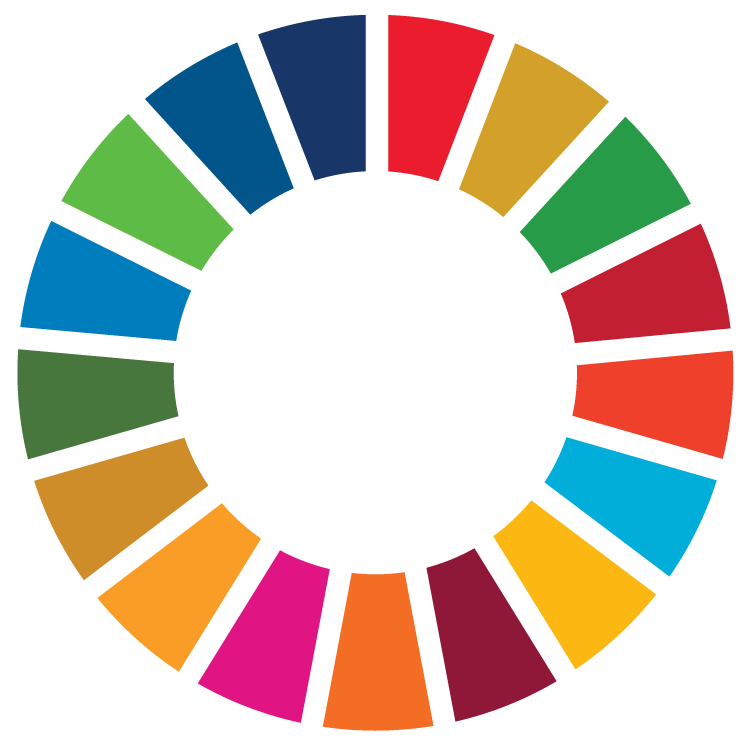
Text traduït
Aquesta assignatura s'imparteix en espanyol. El pla docent en català és una traducció de l'espanyol.
La traducció al català està actualitzada i és equivalent a l'original.
Si ho prefereixes, consulta la traducció!
Texto original
Esta asignatura se imparte en español. El texto original de este plan docente es en español.
Text created with automatic translation
The language of instruction of this subject is Spanish. The course guide in English is an automatic translation of the version in Spanish.
Automatic translation may contain errors and gaps. Refer to it as non-binding orientation only!
Perhaps you should consult the original version of the text!
Course
Journalism
Subject
Press Reporting Workshop III
Type
Compulsory (CO)
Academic year
3
Credits
6.0
Semester
2nd
| Group | Language of instruction | Teachers |
|---|---|---|
| G11, classroom instruction, mornings | Spanish | María Francisca Forga Martel |
Sustainable Development Goals (SDG)

- 5. Gender equality
- 16. Peace, justice and strong institutions
Objectives
The subject aims to introduce the student to the theoretical and practical knowledge of opinion journalism. The objectives are:
- Know the journalistic genres of opinion and delve into them.
- Write in each of the variants differentiating the basic features and know the tools that can be used.
- Know the basic principles of rhetoric.
- Develop a critical spirit when analyzing opinion journalism.
- Acquire a perspective of opinion journalism in our country and follow some authors.
Learning outcomes
- Recognize the elements and values of journalism, the routines and procedures, as well as the genres and formats that characterize the exercise of the journalistic profession.
- Communicate information, ideas, arguments, comments or opinions in an orderly and clear manner to both specialist and non-specialist audiences, taking linguistic, social, cultural and gender diversity into account.
- Apply critical thinking, ethical commitment and strategic vision to the different phases of professional journalism routines and in the relationship with diverse audiences.
- Demonstrate motivation, creativity and initiative in the development of academic and professional projects, as well as commitment to quality, rigor and ethics.
- Master the written, oral, audiovisual, graphic, hypertext and multimedia languages, to present information in an effective journalistic way, both in Catalan and Spanish and in English, and with adaptation to the medium and the audience.
Content
- Introduction to genres of opinion
- Rhetoric: Aristotle and the power of persuasion. The pitfalls of opinion. Distinguish the truth, the dogmatisms, the paradoxes, the false referents. Argumentation: validity of arguments. fallacies
- The signed article: the attraction of signatures. The column: the literature of the newspapers
- The editorial: relevance in its context. Publishing as an instrument of influence or mediation
- The political column
- Criticism: the role of the critic. Television criticism. Cultural journalism. Types of criticism. How to make a review
- The portrait/journalistic profile
- The graphic joke, the most synthetic and satirical opinion. The humor drawing and the caricature
Evaluation
The evaluation is continuous. The course is regularly and systematically monitored, which implies the student's attendance in class and his active participation in practicals (minimum 80% attendance).
Only the student who has completed 100% of the compulsory practices is evaluated.
- During the course, several exercises are required (political column, portrait, film review, television review and free column) that make up 60% of the subject's grade.
- Attendance and monitoring of the workshop is valued at 10%.
- Plagiarized work or any attempted fraud is given a grade of 0 and the anti-plagiarism protocol is activated.
- 20% of the grade corresponds to an exam (written test).
- 10% of the grade corresponds to a set of oral presentations that are given in the classroom.
Methodology
The classes follow the methodology of a workshop or a seminar. Under the guidance and supervision of the teaching staff, the students write their opinion texts in the classroom. Faculty review student papers and advise on how to improve them. In the classroom, there are also practical exercises and viewings of audiovisual pieces that can generate debate or to analyze how some of the most recognized authors approach genres of opinion in the press. However, students must bring to class opinion columns published in the press to share and comment on them. All together, with the final aim of practicing various rhetorical resources, learning to argue and to write in an original and convincing style.
Bibliography
Key references
- Capdevila, C. (2017). La vida que aprenc. Arcàdia.
- López Hidalgo, A. (2012). La columna: Periodismo y literatura en un género plural. Comunicación Social, ediciones y publicaciones.
- Parratt, S., Paniagua, P., Abejón, P. (2017). Manual práctico de redacción periodística: Géneros informativos, interpretativos y de opinión. Síntesis.
- Santamaría, L., Casals, M. J. (2000). La opinión periodística: Argumentos y géneros para la persuasión. Fragua.
- Weston, A. (2011). Las claves de la argumentación: Edición actualizada (11 ed.). Ariel.
Further reading
Teachers will provide complementary bibliography and compulsory reading throughout the course via the Virtual Campus.